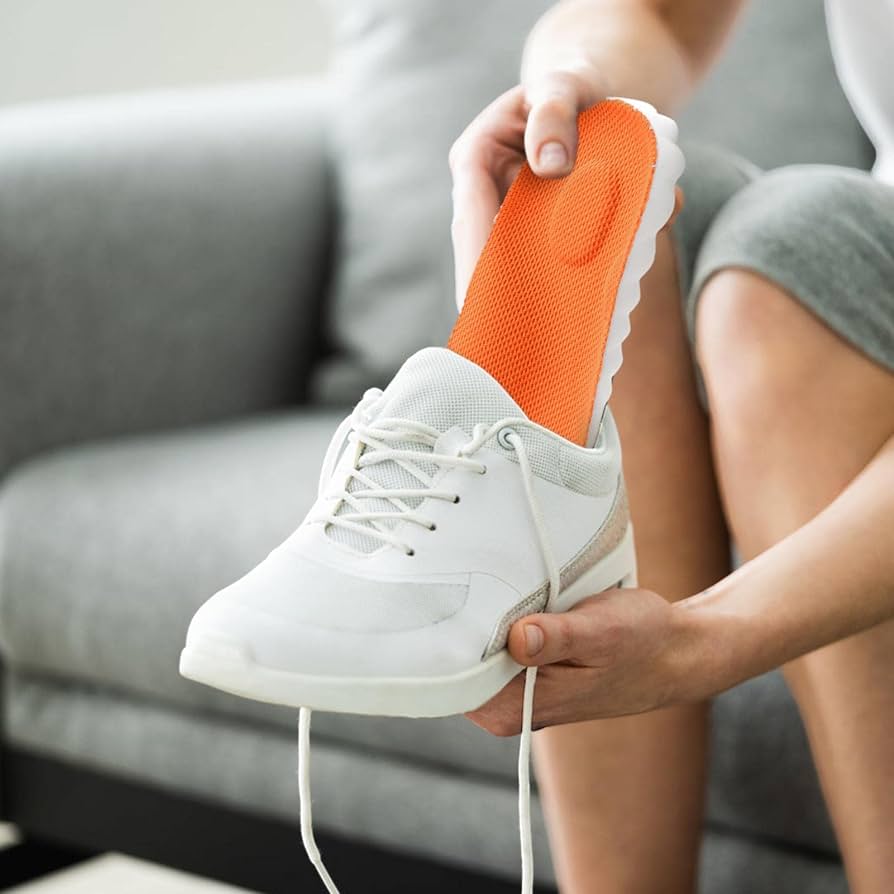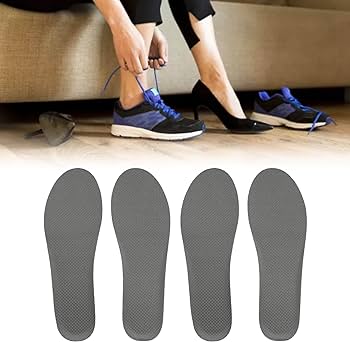Introduction of Diabetic Insoles

Diabetic insoles are specially designed footwear inserts aimed at providing relief and support for individuals with diabetes. These insoles help prevent foot injuries and complications by offering extra cushioning, proper arch support, and pressure distribution. People with diabetes often face foot-related issues due to poor blood circulation and neuropathy, making diabetic insoles essential for maintaining foot health. By reducing pressure points and providing a stable walking surface, these insoles help prevent ulcers and calluses, promoting overall foot health and comfort.
1. Importance of Diabetic Insoles
1.1 Reducing Foot Pressure
Diabetic insoles reduce pressure on the feet by distributing weight evenly. This helps in preventing the formation of ulcers and blisters, which are common in people with diabetes. The cushioning provided by these insoles ensures that the feet are not subjected to excessive pressure during walking or standing.
1.2 Improving Blood Circulation
Proper foot support from diabetic insoles aids in improving blood circulation. Poor blood flow is a significant concern for diabetic patients as it can lead to slow healing of wounds. Insoles encourage better blood flow, reducing the risk of complications.
2. Features of Diabetic Insoles

2.1 Cushioning and Comfort
Diabetic insoles are designed with extra cushioning to provide maximum comfort. This is crucial for preventing foot fatigue and discomfort, especially for those who spend long hours on their feet. The soft materials used help in absorbing shocks.
2.2 Moisture-Wicking Properties
These insoles often come with moisture-wicking properties to keep the feet dry. Excess moisture can lead to fungal infections and skin irritation. Moisture-wicking insoles help in maintaining a healthy environment inside the shoes.
3. Choosing the Right Diabetic Insoles
3.1 Custom vs. Over-the-Counter Insoles
There are two main types of diabetic insoles: custom-made and over-the-counter. Custom insoles are tailored to fit the specific shape and needs of your feet, while over-the-counter insoles are more affordable and provide general support.
3.2 Material Considerations
Choosing the right material is crucial for diabetic insoles. Materials like gel, foam, and air-blown EVA provide different levels of support and cushioning. It’s important to select a material that offers comfort and durability.
4. How Diabetic Insoles Prevent Ulcers
4.1 Pressure Distribution
By distributing pressure evenly across the foot, diabetic insoles help in preventing pressure points that can lead to ulcers. This even distribution reduces the risk of skin breakdown and ulcer formation.
4.2 Reducing Friction
Diabetic insoles are designed to minimize friction between the foot and the shoe. Reducing friction helps in preventing blisters and calluses, which can develop into ulcers if not treated properly.
5. Diabetic Insoles for Different Activities
5.1 Everyday Use
For daily activities, insoles provide the necessary support and comfort for routine tasks. They are designed to be lightweight and fit into most types of footwear, making them ideal for regular use.
5.2 Sports and Exercise
Specialized diabetic insoles for sports provide additional support and cushioning required during physical activities. They help in absorbing shocks and preventing injuries during exercise or sports.
6. Maintenance of Diabetic Insoles
6.1 Cleaning and Care
Regular cleaning of diabetic insoles is essential to maintain their effectiveness. Use mild soap and water to clean them, and avoid using harsh chemicals. Proper drying is also important to prevent mold and bacteria growth.
6.2 Replacement Frequency
Diabetic insoles need to be replaced periodically to ensure they provide adequate support. On average, they should be replaced every six months, but this can vary depending on the level of use and wear.
7. Benefits of Using Diabetic Insoles
7.1 Enhanced Comfort
Diabetic insoles enhance overall comfort by providing extra cushioning and support. This helps in reducing foot pain and discomfort, making daily activities more manageable.
7.2 Preventing Foot Complications
Regular use of diabetic insoles can prevent foot complications such as ulcers, calluses, and blisters. This is particularly important for diabetic patients who are at higher risk of foot issues.
8. Potential Drawbacks of Diabetic Insoles
8.1 Cost Considerations
Custom diabetic insoles can be expensive. However, they offer personalized support that can justify the cost for many users. Over-the-counter insoles are more affordable but may not provide the same level of support.
8.2 Limited Lifespan
Diabetic insoles have a limited lifespan and need to be replaced regularly. This ongoing cost can be a drawback for some individuals, especially if they require custom-made insoles.
9. Comparing Diabetic Insoles to Regular Insoles
9.1 Specialized Support
Diabetic insoles offer specialized support that regular insoles do not. They are specifically designed to address the needs of diabetic patients, providing better pressure distribution and cushioning.
9.2 Additional Features
Features like moisture-wicking and antimicrobial properties are often found in diabetic insoles but not in regular insoles. These additional features help in maintaining foot hygiene and preventing infections.
10. When to Consult a Podiatrist
10.1 Persistent Foot Pain
If you experience persistent foot pain despite using diabetic insoles, it is important to consult a podiatrist. They can assess your foot health and recommend appropriate solutions.
10.2 Development of Foot Ulcers
If you notice any signs of foot ulcers, seek medical advice immediately. A podiatrist can provide treatment and suggest custom insoles to prevent further complications.
Conclusion
Diabetic insoles play a crucial role in maintaining foot health for individuals with diabetes. They offer enhanced comfort, reduce pressure, and help prevent foot complications such as ulcers and blisters. Choosing the right insoles, maintaining them properly, and consulting a podiatrist when necessary are important steps in ensuring the effectiveness of these insoles. By incorporating diabetic insoles into your daily routine, you can significantly improve your overall foot health and quality of life.
FAQs
1. What are diabetic insoles?
Diabetic insoles are specialized footwear inserts designed to provide support and cushioning for people with diabetes, helping to prevent foot injuries and complications.
2. How do diabetic insoles help prevent foot ulcers?
They distribute pressure evenly and reduce friction, minimizing the risk of skin breakdown and ulcer formation.
3. How often should diabetic insoles be replaced?
Typically, they should be replaced every six months, but this can vary depending on usage and wear.
4. Can I use over-the-counter diabetic insoles instead of custom-made ones?
Yes, over-the-counter insoles are more affordable and provide general support, but custom insoles offer personalized fit and support.
5. Are diabetic insoles covered by insurance?
Some insurance plans cover diabetic insoles, especially if they are custom-made. It’s best to check with your insurance provider for specific coverage details.


What i do not realize is in fact how you are no longer actually much more wellfavored than you might be right now Youre very intelligent You recognize thus considerably in relation to this topic made me in my view believe it from numerous numerous angles Its like men and women are not fascinated until it is one thing to do with Lady gaga Your own stuffs excellent All the time handle it up.
Thanks for sharing. I read many of your blog posts, cool, your blog is very good. https://www.binance.com/ru/join?ref=B4EPR6J0